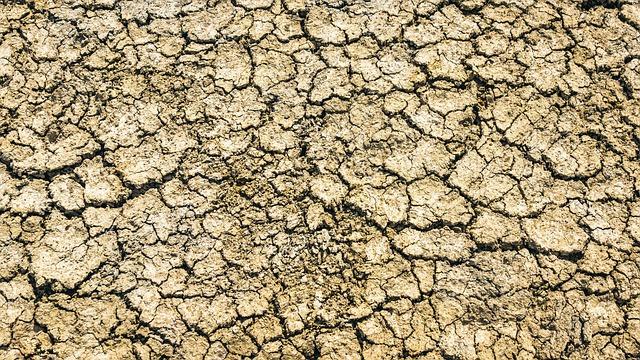- Introduction
- Impact on Agriculture
- Water Scarcity
- Environmental Concerns
- Community Struggles
- Conclusion
- FAQs
Introduction
The ongoing drought crisis has brought about significant challenges in various aspects of society. In this article, we will delve into the impacts on agriculture, the growing threats of water scarcity, environmental concerns arising from prolonged dry spells, and the struggles faced by communities in drought-affected regions.
Impact on Agriculture

(Image: Pixabay/@josealbafotos)
The severe drought conditions have severely impacted agricultural lands, leading to crop failures, reduced yields, and livestock losses. Farmers are facing immense difficulties sustaining their livelihoods as they grapple with water shortages and diminished resources for irrigation and livestock husbandry.
In response to the dwindling water supplies, farmers are being forced to implement water conservation measures, such as drip irrigation and rainwater harvesting, to minimize losses and optimize resource usage. The agricultural sector's resilience is being tested as it struggles to adapt to the changing climate patterns and the increasing frequency of drought episodes.
Government interventions and support programs are crucial to assisting farmers in coping with the adverse effects of drought on agriculture. Initiatives focusing on drought-resistant crops, soil conservation practices, and financial aid can help mitigate the challenges faced by farmers during prolonged dry spells.
Water Scarcity

(Image: Pixabay/@MICHOFF)
The deepening drought crisis has exacerbated water scarcity in many regions, posing a grave threat to human populations, ecosystems, and industries dependent on adequate water supply. Rivers, lakes, and reservoirs are drying up, leading to water rationing, conflicts over water rights, and disruptions in water-dependent activities.
Efforts to address water scarcity include promoting water conservation measures like fixing leaks, reducing water wastage, and promoting efficient water use practices in households, industries, and agriculture. Integrated water resource management approaches are essential to ensure sustainable water availability and equitable distribution amid worsening drought conditions.
Water stress is intensifying, necessitating innovative solutions such as desalination, wastewater recycling, and groundwater recharge to augment water sources and alleviate the impacts of depleting freshwater reserves. Collaborative actions involving stakeholders from government, industry, and civil society are imperative to ensure long-term water security in drought-prone areas.
Environmental Concerns

(Image: Pixabay/@pixelRaw)
The extended period of drought has raised significant environmental concerns, including deforestation, soil erosion, habitat degradation, and biodiversity loss. Ecosystems are under immense pressure as water sources diminish, vegetation withers, and wildlife populations decline due to food and water shortages.
Climate change exacerbates the environmental impacts of drought, amplifying the frequency and intensity of extreme weather events and disrupting ecological balance. Mitigation measures such as reforestation, land restoration, and wildlife conservation efforts play a vital role in restoring ecosystems and fostering resilience to future droughts.
Educational initiatives and public awareness campaigns are essential in promoting sustainable environmental practices, fostering a sense of stewardship towards natural resources, and mitigating the detrimental effects of drought on ecosystems and biodiversity.
Community Struggles

(Image: Pixabay/@TonW)
Communities facing prolonged drought conditions endure numerous challenges, including water shortages, food insecurity, health risks, and economic hardships. Vulnerable groups, such as children, elderly individuals, and marginalized populations, are particularly affected by the cascading impacts of drought on livelihoods and well-being.
Community resilience-building efforts encompass disaster preparedness, drought response plans, and social support systems to enhance adaptive capacities and mitigate risks associated with water scarcity and food insecurity. Collaborative initiatives involving local authorities, NGOs, and community-based organizations are instrumental in addressing the diverse needs of drought-affected communities.
Promoting sustainable water management practices, enhancing agricultural diversification, and empowering communities through education and capacity-building programs are essential in fostering resilience and reducing vulnerabilities in drought-prone regions. Solidarity and collective action are pivotal in navigating the challenges and uncertainties imposed by prolonged drought.
Conclusion
In conclusion, the deepening drought crisis underscores the urgent need for proactive measures to address its far-reaching impacts on agriculture, water resources, the environment, and communities. Sustainable water management, climate-resilient agriculture, ecosystem conservation, and community empowerment are key pillars in building resilience and combating the challenges posed by prolonged dry spells.
FAQs
What are the main causes of drought?
Drought can be caused by various factors, including climate change, deforestation, over-extraction of groundwater, and natural climatic variations. Human activities and environmental degradation play a significant role in exacerbating drought conditions.
How can individuals contribute to drought mitigation efforts?
Individuals can contribute to drought mitigation by practicing water conservation, supporting sustainable agricultural practices, planting drought-resistant vegetation, and raising awareness about the importance of water resource management. Small actions at the individual level can collectively make a substantial impact on mitigating drought effects.

